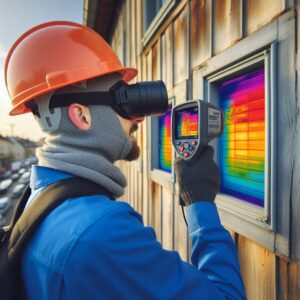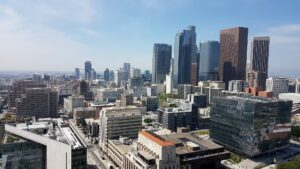High energy bills, draughts and fluctuating temperatures in the building can all be one of the most frustrating aspects of electricity bills to deal with. But have you ever stopped considering if your energy usage is too high? Conducting an energy audit can help significantly with utility bills, reduce energy expenses and improve overall efficiency. In this blog post, we’ll provide you with an easy-to-follow step-by-step guide on how to conduct an effective energy audit so that you can start saving money today!
What Are Energy Audits?
Have you ever wondered where your business gets its energy from? An energy audit can help answer this question and provide insight into the cost-saving measures and sustainability initiatives you can take to maximize efficiency. These audits, conducted by professionals, involve an in-depth analysis of your building’s electrical system, assessing all components for how much energy is being used, wasted, or recycled.
Based on the audit results and compliance with regulations, you’ll receive a detailed report pinpointing problem areas and outlining necessary changes that can help reduce power consumption. From an adequate air supply unit inspection attic insulation to LED lighting implementation, an energy audit helps determine ways to make energy-saving technology optimize the performance of your building while also creating a safer environment.
Why Conduct Energy Audits?

Conducting annual energy audits can be a cost-effective way to monitor combustion appliances’ annual fuel utilization efficiency, such as water heaters, furnaces, and boilers. Engaging an energy auditor to conduct a comprehensive assessment can help you uncover insights into areas where there may be potential savings on your energy bill.
It may also reveal necessary upgrades or repairs for your building’s appliances. In addition, energy audits can increase the overall comfort level of a building by balancing airflow and detecting sources of drafts from windows and doors. Plus, with most energy audits averaging around $400 to $500, it’s easy to see why conducting one is worth it!
How to conduct an energy audit a step-by-step guide?
Taking the DIY route of conducting an energy audit can save you time and money without compromising results. There are five primary steps involved in any energy audit:
1) Preparing your property for the process
2) Assessing the lighting, heating and air conditioning system
3) Collecting data and identifying areas for improvement
4) Formulating recommendations
5) Implementing solutions
Preparing your property includes making necessary repairs to rooms, furnaces, etc. while assessing the lighting systems means taking note of excessive lighting or poor orientation/positioning of light fixtures. Collecting data requires measuring temperature variations, indoor air quality, and other pertinent information while formulating recommendations entails creating an action plan with cost breakdowns and proposed modifications.
Implementing a solution is often the most intricate step that requires a professional’s expertise. A well-conducted energy audit will provide you with an estimate of potential savings during each step to help guide effective decision-making.
Benefits Of Conducting An Energy Audit
Here are what you should know:
Understand your energy use
An energy audit helps identify areas of excessive energy consumption, leading to cost savings and more efficient operations. It provides an in-depth analysis of your entire facility’s energy use, enabling you to pinpoint key areas that could benefit from improved efficiency.
Reduce operating costs
Energy audits can often lead to significant cost savings. By identifying and addressing potential problem areas, inefficient systems, and wasteful practices, an energy audit can reveal tangible solutions for reducing energy use and expenses.
Identify opportunities for renewable energy
An energy audit can also help you identify opportunities for using renewable energy sources such as solar and wind power. It can provide information on the potential return on investment from such investments and help you determine whether or not they make financial sense for your organization.
Improve safety
Energy audits can also uncover potential health and safety risks associated with excessive energy use. For instance, an audit may reveal non-compliant wiring in your facility. By addressing such issues, you can avoid potential hazards and keep your facility safe for employees and customers.
Enhance sustainability
Finally, energy audits can help improve your facility’s overall sustainability. By improving efficiency, reducing energy consumption, and taking advantage of renewable energy sources, an audit can positively impact the environment and your community.
Conducting Energy Audits is a great way to ensure your facility runs efficiently, safely, and sustainably. Doing so can lead to significant cost savings, improved safety, and greater sustainability for your organization. Contact a professional energy auditor today if you want to learn more about how an energy audit can benefit your facility.
Things To Consider when Conducting an Energy Audit
Let’s have a look at what to consider while conducting an energy audit:
 1. Understand the current energy usage:
1. Understand the current energy usage:
Understanding how much energy your local utility company, building, or facility uses is important before embarking on an energy audit. This can help you see energy-saving opportunities identify areas where efficiency improvements can be made, and also give you a baseline for tracking future changes.
2. Consider different lighting solutions:
Lighting accounts for a large portion of energy usage in most buildings, so it is important to consider different lighting solutions that can be implemented. This can include replacing conventional bulbs with LED or CFL bulbs, using natural gas or sunlight and optimizing the current lighting systems.
4. Install energy-efficient appliances:
Replacing older appliances with energy-efficient models can also help to reduce energy costs. Look for appliances and electronics that are Energy Star certified and use the least amount of energy possible.
5. Monitor your electric bill:
Once you have made changes to improve the energy efficiency upgrades of your building, it is important to monitor your energy usage to identify any potential energy savings opportunities. This can be done using an energy monitoring system or manually tracking your usage.
By following these tips, you can ensure that you take the necessary steps to reduce energy consumption and costs. Conducting regular energy audits can help you identify potential improvements and keep track of any changes made to maintain optimal efficiency.
What Is the Cost of Conducting a Professional Energy Audit?
Knowing what it takes to reduce your building’s energy use doesn’t need to cost an arm and a leg. Professional energy assessments are available to determine how much you could save on heating and cooling costs by making simple improvements, like finding air leaks.
However, the cost of the assessment has the potential to vary from provider to provider. It often depends on factors such as building size, the complexity of heating and cooling systems, or even government subsidies.
Nevertheless, after conducting a professional energy assessment, you can expect your building’s overview of your heating system, personalized recommendations for improvements that suit your lifestyle and budget, real data on possible savings made through improvements, and estimated time frames for return of investment.
The Final Word
An energy audit is important to understanding your building’s energy consumption and identifying areas where you can save energy. Hopefully, the step-by-step guide offered here has provided some helpful tools to assist you in conducting your energy audit. From collecting data to implementing efficiency changes, an energy audit offers ways to improve your building’s energy performance effectively.
VertPro®, can help to optimize your building’s functioning and further reduce costs associated with energy expenditure. Remember — today’s effort saves more money than tomorrow’s retrofit! Get started on your building’s energy audit today and create an eco-friendlier building for yourself and life for future generations.















